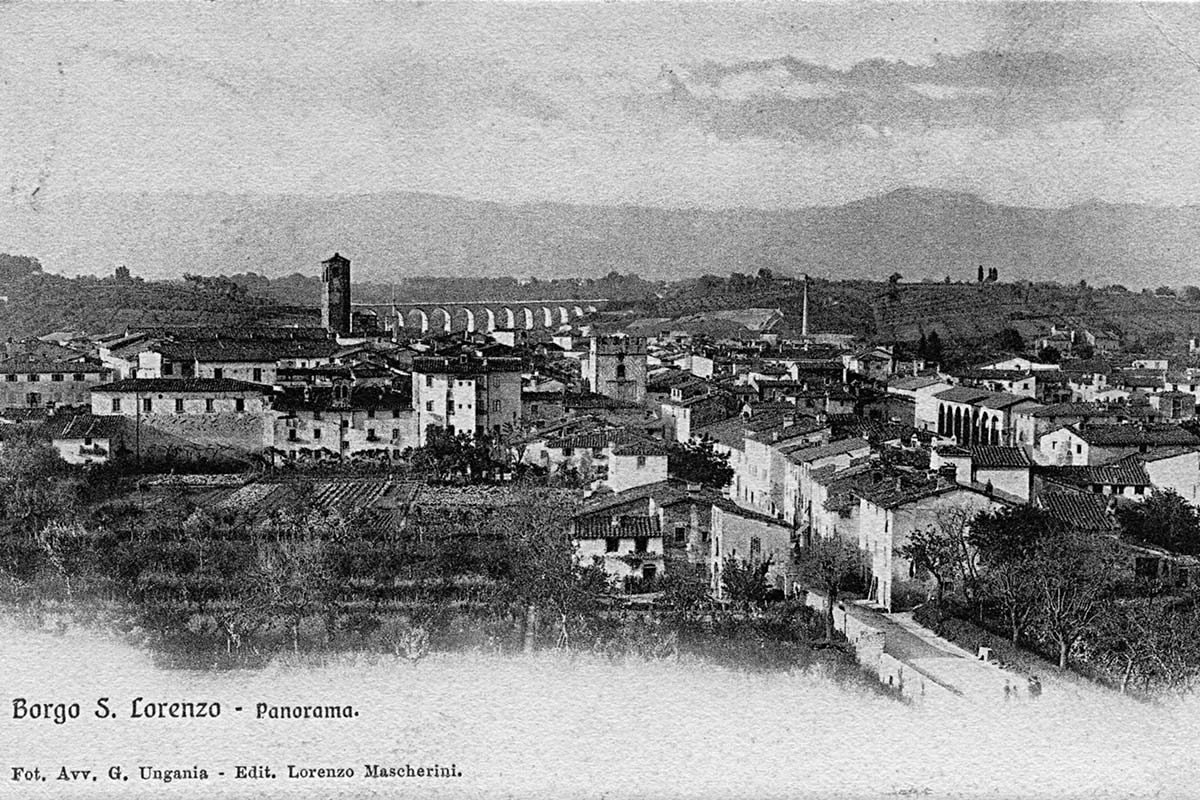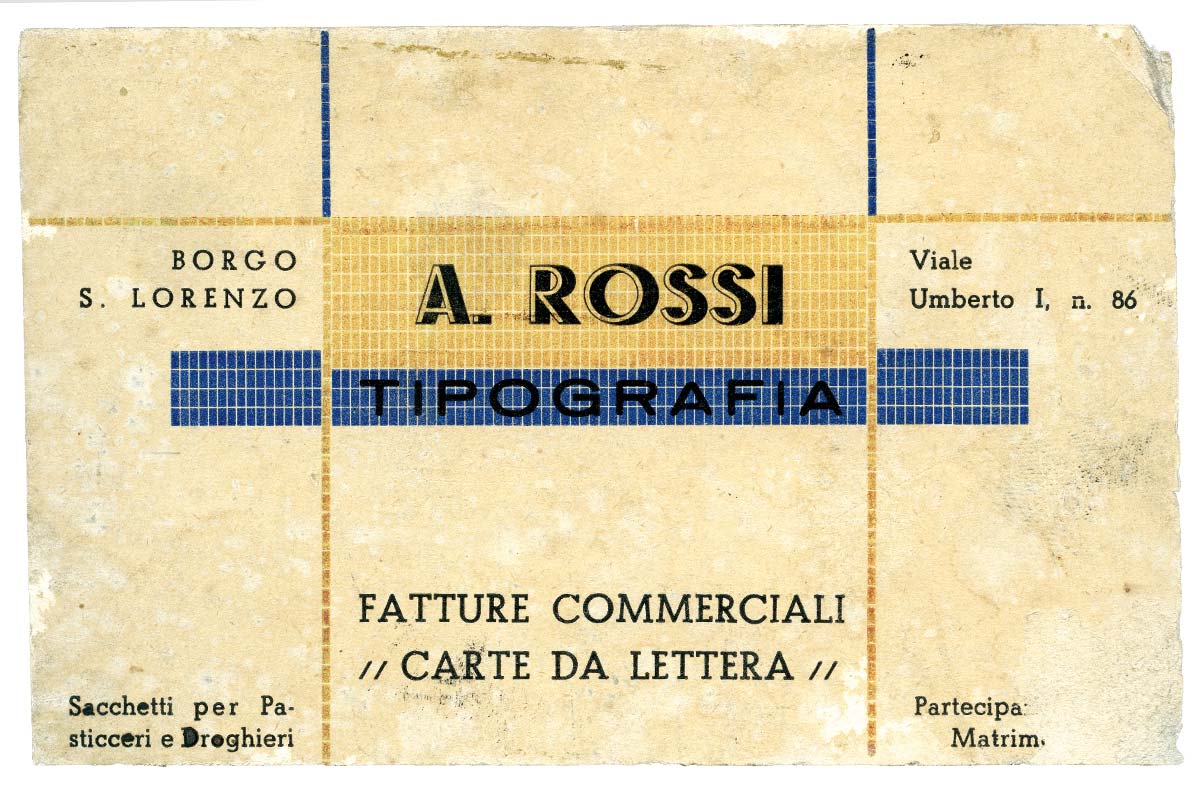During the thirties, both in philosophy and in art, the individual was magnified. The literary scene was animated. Theaters were crowded, people asked questions about the genius Pirandello, while at the ticket offices the plays by Giovacchino Forzano, playwriter, librettist, theater- and movie director and a native from the Mugello area, were a great success.
Works by Saba, Ungaretti, Bacchelli, Moravia, Quasimodo and Gadda were published.
Vittorini and Pavese would enter the scene soon after and with them a new kind of literature, in style, in expression, in the interior world that took shape and substance. In that same period, in Borgo San Lorenzo (Firenze) in the Mugello, Antonio Rossi opened his typography. It was an artisan typography where the smell of inks surprized customers and writers.
Conversations took place among the deafening noise of the printing machinery, where newspapers, books, wedding invitations, communion and confirmation cards, labels for food, beverages and medicines were printed.
The typography was a world apart. Being part of it meant smelling the flavor of lead, loving the little miracle,almost an alchemical wonder, to watch the paper filling up, hosting texts and images. This was the world of Antonio Rossi. In his native Borgo San Lorenzo he had created an activity that referred back to the work carried out by the great florentine typographists, who, with entrepreneurial courage, accepted to support the adventures of writers, thinkers and artists, first of all Giovanni Papini and Ardengo Soffici.

One of the sons of Antonio Rossi, Giorgio, grew up in the typography. Those rooms full of strenuous activities were his training ground, his stimulus, his school. At first Giorgio Rossi learnt to love the job. Based on that he learnt a profession which for him has been a faithful companion, a sweet obsession.
A few years after the second world war, Giorgio had the idea and the courage to modify the structure of the activity inherited from his father. The typography turned into a stationery firm. The work became more and more artistic, also thanks to the presence of Patrizia, Giorgio’s wife, who had successfully attended the Academy of Fine Arts in Florence.
The stationery firm started to produce papers and cards of high quality, with an added value of a thorough historical-artistic knowledge, a rooted love for art, a taste for classic contemporaneity.
The decorative papers, the cards, the writing papers, the notebooks attest a love for the profession which combines the most refined and advanced industrial technology with an artisan heritage, still practiced and maintained. Antonio’s grandsons, Mattia and Taddeo, continue the activity, which has meanwhile become an industry, with commitment and passion which they, in turn, have learnt.
Also thanks to them, important collaborations with the fashion world have been initiated and a start has been made to develop a connection with the museum merchandising. Today, the Rossi products can be found in the best Stationery and Gift Shops in the most important cities in the world.

Over the last decades the foreign markets have rewarded the work of Rossi 1931.
At the moment almost 80% of the production goes to export, especially to the American market, the Anglo-Saxon markets and Japan.
Throughout the world an important part of the story and the tradition of the florentine stationery is told by Rossi 1931.
The customers who choose the Rossi products, choose Florence, they choose that particular charm that time has not cancelled but fortified, especially in those who still cultivate the pleasure of writing and enjoy quality paper.
This is the classic aspect epitomized in all the Rossi collections: a tribute to taste, to elegance, to civilization.
From 1931 till today,
with the same respect for the job and the beauty…
![]()
![]()




